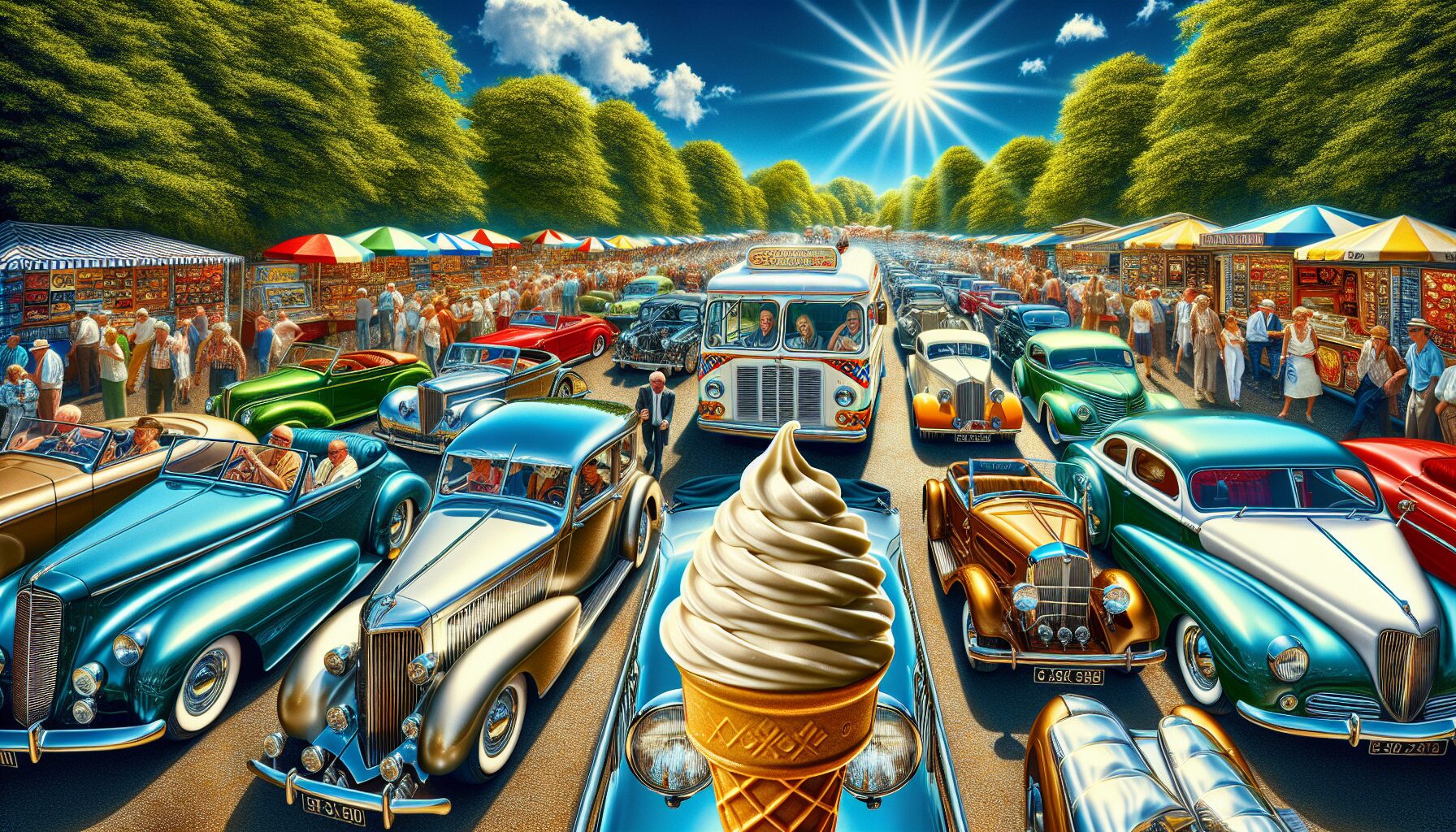The Timeless Allure of Classic Cars
Classic cars hold a unique place in automotive culture, symbolising an era of craftsmanship, style, and nostalgia. Unlike modern vehicles that prioritise efficiency and technology, classic cars evoke emotion through their design and history. Enthusiasts cherish these vehicles not only as modes of transport but as rolling art pieces that tell stories from decades past. The appeal of classic cars extends beyond mere aesthetics; it encompasses the tactile experience of driving a machine built with mechanical purity and intricate detail.
In 2025, the global classic car community remains vibrant, with events like the Lost in the ’50s festival and numerous regional car cruises celebrating automotive heritage. These gatherings offer enthusiasts a chance to connect, showcase their prized vehicles, and educate new generations about automotive history. Moreover, classic car shows often blend cultural elements such as music, food, and fashion from the eras they represent, enhancing their nostalgic charm.
Interest in classic cars also benefits from recent media attention and online platforms that make restoration tips, parts sourcing, and valuation information more accessible. Despite advances in electric vehicles and automation dominating headlines, the classic car market continues to thrive as a counterbalance that honours tradition.
Navigating the Restoration Journey: Practical Tips for Classic Car Owners
Restoring a classic car is both a rewarding hobby and a meticulous endeavour. For aspiring restorers or seasoned collectors looking to maintain their vehicles integrity, several practical considerations are essential. Firstly, thorough research into the specific models history and original specifications sets the foundation for an authentic restoration. This includes understanding factory paint colours, engine types, interior materials, and period-correct accessories.
Sourcing parts can be one of the most challenging aspects. Owners often turn to specialised suppliers or salvage yards where rare components may be found. Online forums and clubs dedicated to particular marques or models provide invaluable advice on trustworthy vendors or alternative parts that maintain originality.
Financial planning is crucial; restoration projects often exceed initial budgets due to unforeseen issues such as rust repairs or mechanical overhauls. Regular maintenance after restoration protects investmentsimple routines like fluid checks, battery upkeep, and careful storage conditions prevent deterioration. Joining local or online classic car communities can offer ongoing support and practical guidance from experienced owners.
Classic Cars in Contemporary Culture: Events and Community Impact
Classic cars continue to shape social experiences by bringing together diverse communities worldwide. Annual events such as Canandaiguas classic car show blend automotive enthusiasm with cultural celebrations featuring global flavours, fostering local tourism and economic activity. These gatherings create platforms for intergenerational exchange where younger audiences discover automotive history alongside passionate veterans.
Themed festivals frequently incorporate traditional music genres like rockabilly or jazz that complement the vintage vibe while showcasing period fashion trends. In some cases, religious organisations have even utilised classic cars for evangelisation effortsas seen in New Mexicodemonstrating how these vehicles can transcend mere hobbyist interest to influence broader social initiatives.
Commercially, classic cars fuel niche markets including restoration services, specialised insurance policies, appraisal experts, and bespoke vehicle storage facilities. However, incidents like the tragic fire at Bicester Motions restoration hub highlight vulnerabilities within this sector that require enhanced safety protocols.
Safety Evolution: Why Old Cars Werent Always Safer
While many admire the aesthetic beauty of classic cars, its important to recognise that older models often lacked critical safety features standard in modern vehicles. Engineering analyses reveal that designs prioritised style over crashworthiness; thin metal panels, absence of airbags, rudimentary seat belts, and limited crumple zones made collisions more dangerous.
This aspect explains why some vintage models are considered ‘cheap classics’ despite their desirabilitythe cost of upgrading safety components may outweigh acquisition price. Enthusiasts who drive classic cars today should take precautions such as retrofitting seat belts where possible or limiting speed to reduce risk.
Understanding these limitations doesnt diminish appreciation but encourages responsible ownership. It also contextualises how automotive safety evolved through innovations prompted by accident research and regulatory changes over recent decades.
Market Dynamics: Valuing Classic Cars in 2025
The classic car market has shown remarkable resilience amid fluctuating economic conditions in 2025. Demand remains strong for iconic models such as the 1959 Chevy Bel Air or rare finds like barn-kept 1973 Dodges that surface after decades of dormancy in pristine condition. Factors influencing value include rarity, provenance, condition, originality, and historical significance.
Moreover, evolving tastes have broadened collector interest beyond traditional muscle cars to include European sports cars and Japanese classics like Datsun Fairlady Z432 variants powered by Skyline GT-R engineshighlighting hybrid customisation trends.
Prospective buyers should approach purchases with due diligence: verifying documentation authenticity; assessing restoration quality; understanding maintenance costs; and considering future resale potential. Working with certified appraisers or trusted dealerships specialised in vintage autos can mitigate risks associated with counterfeit parts or inflated prices.
Conclusion: Preserving Heritage While Embracing Modernity
Classic cars embody a tangible link to automotive historya testament to engineering artistry and cultural expression across eras. Their preservation requires dedication not only through restoration work but also by fostering education around safe operation and historical context.
As we advance technologically with electric vehicles and autonomous systems taking centre stage in transportation discourse, classic cars provide balance by reminding us of simpler yet profound craftsmanship roots. The community spirit surrounding them cultivates shared enthusiasm that transcends age groups and cultural boundaries.
By combining practical restoration advice with awareness of safety considerations and market trends, enthusiasts can ensure these cherished machines remain roadworthy icons for future generations to admire.
Notes
- The Lost in the ’50s festival remains one of the largest classic car events attracting thousands annually.
- A barn-find 1973 Dodge was recently discovered in immaculate condition after 40 years.
- Old cars generally lacked airbags, advanced seat belts, and crumple zones standard since the late 20th century.
- Hybrid customisations combining iconic engines (e.g., Skyline GT-R) with vintage chassis are rising in collector circles.
- A fire at Bicester Motion’s restoration hub destroyed multiple classic cars highlighting risks within storage facilities.

